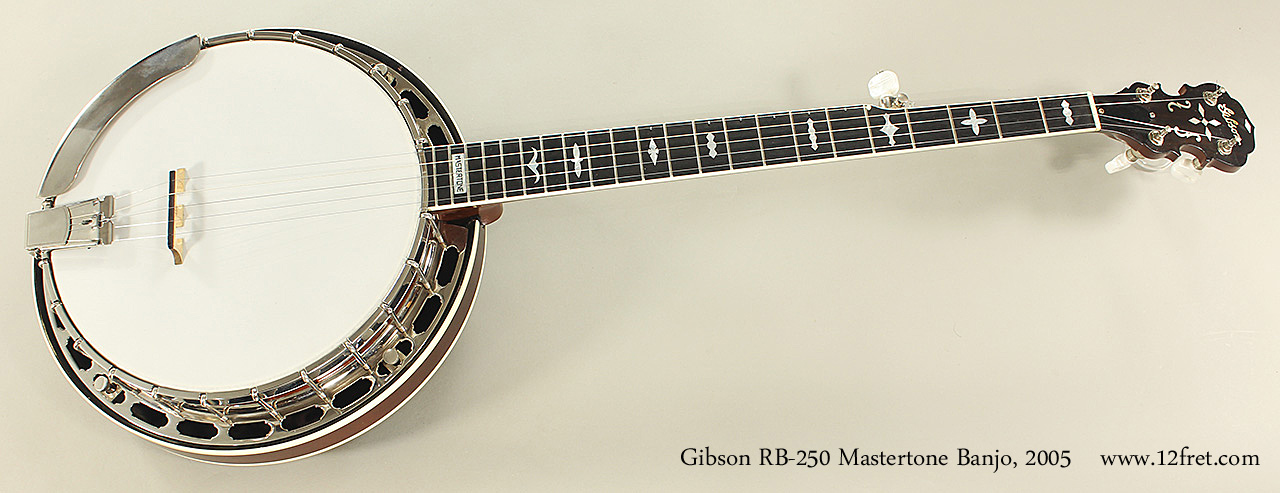The banjo models were given letter codings to indicate the type of stringing: The letters were followed by a number indicating the grade or quality of the instrument: Thus a TB-5 was a tenor banjo with -5 grade fancy trimmings. For more detailed information on the various models, see Banjo Models.
- what he means when he says we are dating;
- Skin and Language;
- Identifying a Gibson Banjo | Our Pastimes!
- ip dating;
- Execution Stats;
Except for the very first Gibson banjos, all of the rims for this period have been made of steamed, rolled, and laminated maple. Depending on the model, there were constructed of either three or four plies: All of the laminates were taper-cut, a method of angling the joining ends of each laminate so that they would overlap rather than have a flat end-to-end joint.

To the inexperienced observer, some rims appear to have been made of five thinner plies; but this is a misconception caused by a practice still in use today. The bending and lamination process is a difficult one and several rims might come off the mold with unsightly glue joints. Then, thin filler strips would be glued into the cuts and then machined flush, resulting in a multiply appearance, while still basically a solid three-ply construction. The tube was the first non-shoe system used by Gibson to secure the tension hooks that tighten the head. As with later models, the tube was secured against a lip on the rim.
By acting as a tight band around the rim, the tube also added greater structural integrity than competing bracket and shoe models.
Gibson banjos by serial number
This plate had stamped perforations around its surface. To secure the pot assembly to the resonator, the earliest models used small hex-head screws that went through a hole the flange to a lug in the resonator. This was later changed to the same hex-head screw going through a separate bracket below the plate that was attached to the rim, and still later to a serrated thumbscrew replacing the hex-head screw.
Banjos with embedded lower screws also had an separate heel cap wooden piece covering the bottom of the neck heel. Several variations were created by Gibson, and these can be followed in my web page on the Evolution of Gibson Banjo Rims. The springs were employed to improve the resilience springiness of the tone chamber.
Discussion Forum
The ball bearing tone chamber design is attributed to Lloyd Loar. Each of the model designations indicated a particular species of wood used for that model see Banjo Model Features, below. Curly maple, burl walnut, and Honduras mahogany were available on their respective models. Other woods such as white holly, were available on fancy models like the Florentine and Bella Voce.
In all cases, the rims were made of maple, and the majority of fretboards were made of Brazilian rosewood not ebony as commonly believed.
- Search Options;
- my mother is dating my ex-boyfriend;
- dating sites for wealthy professionals uk;
- Siminoff Banjo & Mandolin Parts.
- ' + entriesTitle + ';
Only the pre trapdoor period and style -6 banjos had ebony fretboards. During the s, Gibson instruments were made in lots of 40s for the most part, this procedure continues today. The bins that were used to move instruments from department to department had 40 cubbyholes. Sometimes, two or three bins or lots of the same model would be made at one time. To assure that parts would fit together and that the finish color would match, the serial number of each banjo was stamped inside its rim, penciled on the neck heel, and chalked or painted in white or red on the inside surface of the resonator with red numbers most often being painted along the inner edge of the resonator so they could be read through the holes in the plate or flange, yet the red would not be obvious from a distance.
The number was in two parts: Gibson Banjos and Later. Dark stain, curly maple neck, no handstop. Wyatt Fawley's banjo, model for the "Retrotone" banjo design. Rare Letter-prefix factory-order number. Double-bound resonator, dark sunburst finish, gold plated pancake tuners, arch-type hoop.
Identifying a Gibson Banjo
Double-bound resonator, dark sunburst finish. Inlay at 22nd fret, 4-hole ring, 8 in serial number is double-stamped.
Number in Rim, signed in res by Earl Scruggs. Elton TP, pink 5S case, sB res, pancakes.
precision luthierie products for mandolin, mandola, and banjo
MT block at 21st, Cut for FH ring of unknown origin. Number in Rim with space between 4 and 9, 4-hole ring, bowtie at 22nd fret, pink case liner, drilled for cam tuners. Elton TP, Friction 5th tuner with round ivoroid button. No FB binding, 4-hole archtop ring, no on rim. Number on headstock and in Rim. Long neck, open back Pink Case liner, Pancake style tuners with white buttons.
Hangout Network Help
Metal button klusons, orange case liner. Long neck, open back. Kluson ss,White buttons "purchased 26 Feb 63 new". MT block at 22nd, Ryan ring installed, no orig ring or case. Number on headstock"archtop" hoop. Metal button klusons, Gover window tp, no case,. Serial Number on peghead, headstock break. Serial Number on peghead, orange case liner, refi'd res, metal tuner buttons.
